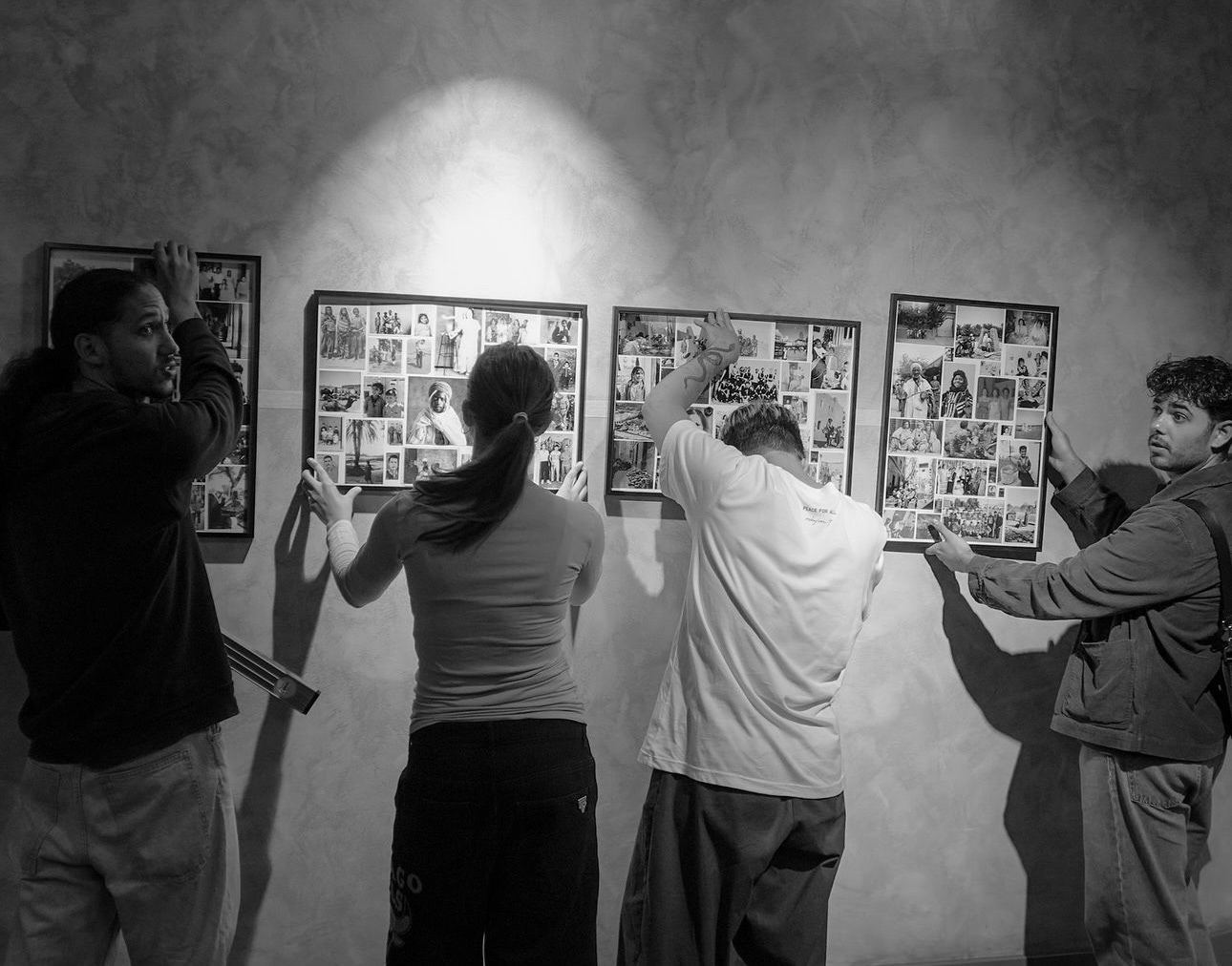« Souvenir de l'Algérie » exhibited for Southern Archives with Green Table
Inspired by the descriptions scribbled on the back of postcards and family photographs, ‘Souvenir de L’Algérie’ is an ongoing rescue and conservation project, archiving the personal and collective memories of Algeria from both historical and familial sources. Drawing from a vast collection of photographs, including those taken during the French colonisation of Algeria by photographers documenting indigenous communities, as well as personal memories from my own family archives, the piece visualises the evolution of Algerian cultural identity.
It showcases images that are often purchased or hidden from the public eye, whether in private collections or as family property, spanning from the late 19th century through the period of French colonisation to the post-independence era, offering a visual journey through the significant transformations and enduring similarities within Algerian society.
The title Souvenir de L’Algérie pays homage to the practice of annotating printed photographs as tokens of memory, a tradition within my family. These prints, often marked with brief notes, names, and dates, act as historical artefacts linking individual experiences with shared history. The title Souvenir de L’Algérie also reflects the handwritten captions found on my father’s youth photographs—Souvenir de mes amis, Souvenir de Tamanrasset, Souvenir de ma famille. These inscriptions, often written in imperfect French, echo the linguistic traces of colonisation, where many Algerians speak the language but do not master it. By preserving this detail, the project not only archives visual memories but also acknowledges the ways in which language carries the weight of history, identity, and displacement.
Photo descriptions and notes written on the back of Mounir Mecili personal photographs, 1984
'I’ve always had an interest in documenting the past, and currently, I’ve managed to digitise a few hundred photographs ranging from the 60s to the late 90s, belonging to family members scattered around the globe.
As a child who spent most of her time reading, I didn’t engage much in conversations like my cousins, but I loved listening to stories about my parents when they were my age or tales about the liberation of Algeria from my grandfather, a man who was always happy to bring out the secret suitcase of photographs hidden on top of his wardrobe to accompany his tales.
While the aunties and uncles would reminisce, I would eagerly flick through the images, taking rather poor-quality photos of these old pictures with my digicam to look back at and show my friends when I returned to London. The urgency and importance of having copies was always present for me. Eventually, I was able to buy myself a scanner that has traveled with me on my trips back home, reigniting these old stories and conversations. Over time, I’ve been given envelopes and albums filled with memories that have led to my existence.'
The ongoing project involves purchasing old photographs taken by colonial and traveller photographers during Algeria’s colonisation. These holiday albums, often bought by resellers, are broken up and sold as individual photographs and negatives for profit. This business of reselling people's photographs from bygone eras has created a market where valuable historical images are fragmented and dispersed, often lost to private collections where they may never be seen again.
Colonial photographers played a significant role during the French colonisation of Algeria, serving purposes such as propaganda, documentation, and ethnographic study. Employed by the colonial administration, these photographers produced images to justify and promote the colonial project, depicting infrastructure developments and the supposed benefits of French rule. They also aimed to document the customs and daily life of indigenous Algerians, often exoticising and romanticising the local populations. This ethnographic work reinforced stereotypes and justified the colonial presence. Additionally, photographers working with the military documented strategic locations and troop movements, helping plan and execute operations while showcasing French military dominance. Commercial photographers, like Jean Geiser, sold images and postcards to Europeans, often staging scenes to reflect European fantasies about the Orient. The vast visual archive created by these photographers provides a rich historical record but must be viewed critically, considering the power dynamics and intentions behind their creation.
By collecting and rescuing these photos, the project provides valuable insights into the diverse Algerian societies that existed across the country and highlights the lives of ordinary Algerian people, whose everyday experiences and appearances are largely overlooked in historical narratives. These photographs reveal not only the appearance and attire of ordinary people but also their jewellery, hairstyles, homes, and daily activities. Through these images, we gain a glimpse into the lives of those who lived through significant historical moments yet remained unrecorded in official histories. The everyday Algerian, with their unique cultural expressions, played a vital role in shaping the nation's identity.
Through documentation, the project aims to bridge the gap between history, memory, and contemporary life. Each image serves as a testament to the resilience and cultural richness of Algerian society, offering a more comprehensive and inclusive narrative. These photographs allow us to see beyond the grand narratives of history and connect with the lived experiences of the people who form the true essence of the nation's past and present.


.